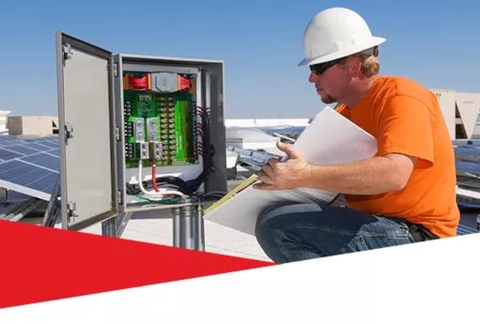Electrical testing is evolving fast. Discover the key changes in the 18th Edition and how to stay compliant with this practical guide for low voltage electricians and contractors.

Electrical Standards Are Changing — What You Need to Know
If you work in electrical testing, you’ll know things are changing fast.
New systems, tighter safety rules, and more complex jobs mean the old ways of working aren’t always enough. The standards are being updated regularly, and if you're not keeping up, it could cost you — in time, in rework, or in missed jobs.
Here’s what’s changing, why it matters, and what you can do to stay ahead.
Why Are the Standards Changing So Often?
Electrical systems are getting more advanced, and so are the rules that keep them safe. That’s why the IET Wiring Regulations (BS 7671) are constantly being reviewed.
Since the 18th Edition was introduced in 2018, we’ve already seen three amendments, including major updates for:
- EV chargepoints
- Surge protection
- Energy storage
- Smart systems
These changes aren’t there to make life harder — they’re there to make sure modern installations are safe, reliable, and ready for the future. If your tools or your approach haven’t been updated since the last amendment, you could be missing something important.
Net Zero Is Driving Big Shifts
The UK is moving fast towards its Net Zero 2050 target — and that’s changing what’s expected from electricians.
The last few years have seen massive growth in renewable tech:
- 1.4 million UK homes now have solar panels
- 22,000 home battery systems were installed in 2024 — 4× more than the year before
- There are now over 73,000 public EV chargepoints, and that’s expected to hit 300,000 by 2030
All of this has an impact on testing. It’s not just ring mains and lighting circuits anymore. You’re working with solar inverters, battery storage, EV chargers, PME earthing, smart metering, and more — all of which are covered by evolving standards.
What This Means for Your Work
As jobs get more complex, the standards follow. That means you need to make sure:
- Your testers are up to date
- Your reports are accurate and complete
- You’re confident in what’s expected for each type of installation
Miss something, and you could face a failed inspection, a return visit, or — worst case — a safety issue that puts people at risk.
The stakes are higher now. Compliance isn’t just about passing an EICR. It’s about doing the job right, first time, every time.
It’s Also About Protecting Yourself
Faulty electricals spark around 4,000 house fires in the UK each year, with fire services warning that wiring issues, cooking appliances, lithium battery devices, and counterfeit electrical products are among the most common causes. Many of these incidents could be avoided by using original chargers, checking for safety certifications like UKCA or CE marks, and not overloading sockets.
You can’t control what others do, but you can make sure your work stands up to the latest safety requirements. That protects your customers — and your business.
Accurate Reporting Is More Important Than Ever
As systems get smarter, clients want proof that the job’s been done right.
That means proper documentation — not scribbled notes or carbon-copy forms. With digital certification tools, you can:
- Cut down paperwork time by up to 40%
- Stop errors creeping in
- Send finished reports before you’ve even packed up your gear
It’s faster, easier, and more professional. It also means you’re less likely to miss a step or get called back to fix a form.
Signs You Might Be Falling Behind
Not sure if you’re fully up to speed? Here are a few warning signs:
- Your tester is over five years old
- You’re still filling out paper certificates
- You avoid EV or solar jobs because they seem too complex
- You haven’t reviewed the Wiring Regs in the last year
If that sounds familiar, it’s probably time for a quick reset.
What You Can Do Now
You don’t need to change everything overnight. Just take a few simple steps to keep your work sharp and compliant.
-
Check your tools
Make sure your tester can handle the latest regs — including RCD tests, EV testing, loop impedance, insulation resistance, and smart systems.
-
Refresh your knowledge
Take half an hour to review Amendment 3 of the 18th Edition. You’ll be surprised how much has changed.
- Go digital
If you're still handwriting certs, now’s the time to switch. Digital tools are quicker, more accurate, and easier to manage — for you and your clients.
Final Word
The industry is shifting. Jobs are changing. Standards are tightening. But with the right tools, knowledge, and systems in place, it doesn’t have to be a headache.
Staying compliant helps you stay competitive — and keeps your customers safe.
Download our free guide: What’s New in the 18th Edition
The low-voltage landscape is shifting fast. As testing becomes more complex and compliance more demanding, electrical professionals face a real challenge: how to stay ahead without slowing down.
This is the first article in a new series built on interviews with Simon Wood, Global Industry Director for Low Voltage Infrastructure at Megger. Over the coming months, we’ll explore the key shifts shaping the industry — and offer practical, forward-looking guidance to help you adapt, stay compliant, and stay competitive.
